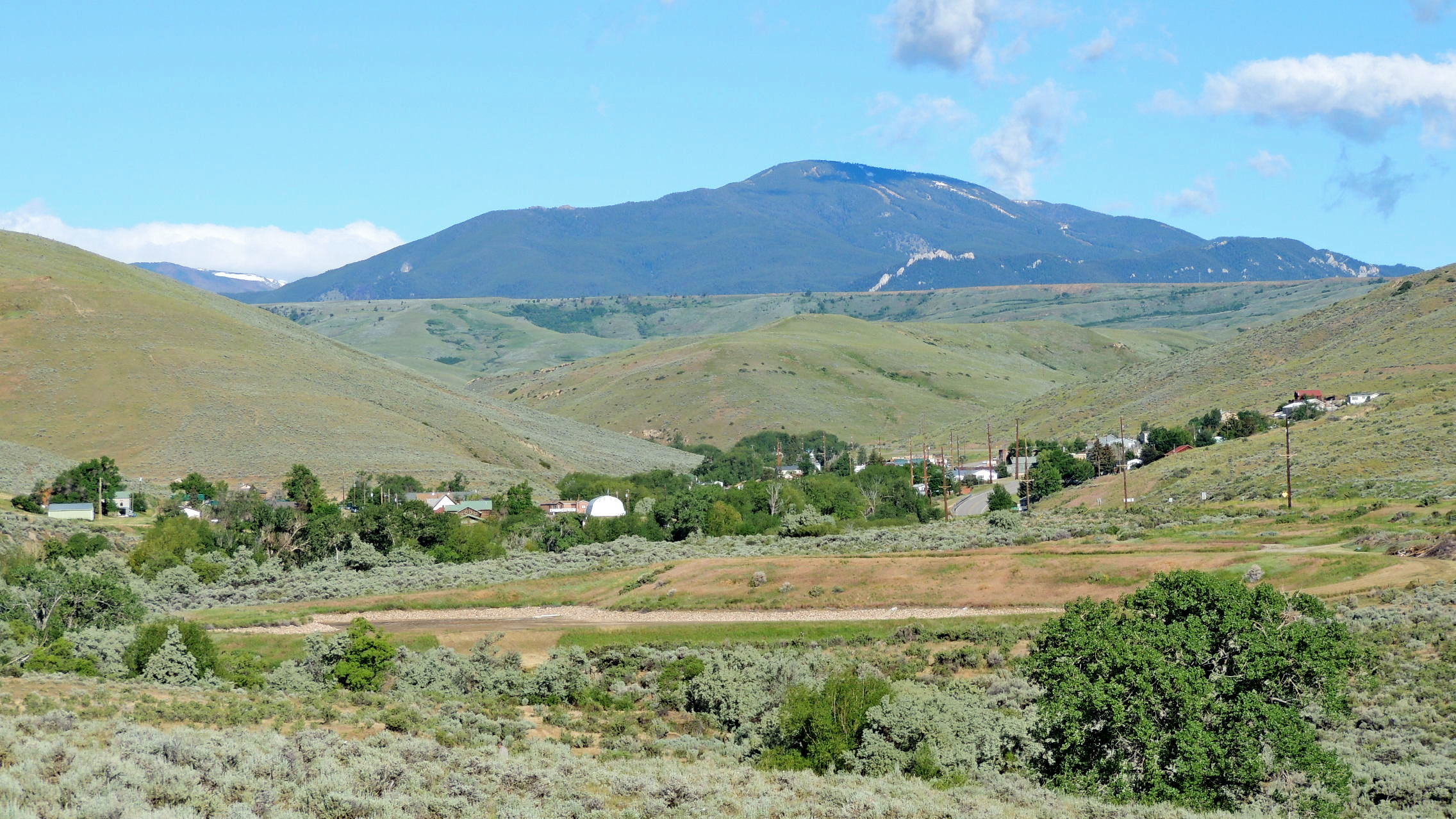
Bearcreek - Bearcreek, MT
Posted by:  T0SHEA
T0SHEA
N 45° 09.656 W 109° 09.470
12T E 644783 N 5002479
In the centre of the little hamlet of Bearcreek, on the north side of Main Street/Highway 308, this Montana Historical Highway Marker relates the story of Bearcreek itself.
Waymark Code: WMWAMW
Location: Montana, United States
Date Posted: 08/03/2017
Views: 1
BEARCREEK
Platted in 1905 by George Lamport and Robert Leavens, Bearcreek was the center of an extensive underground coal mining district. At its height during World War I, Bearcreek boasted a population of nearly 2,000 people. The community was ethnically diverse and included Serbians, Scotsmen, Montenegrins, Germans, Italians and Americans.
They were served by seven mercantiles, a bank, two hotels, two billiard halls, a brickyard and numerous saloons. The town also boasted concrete sidewalks and an extensive water system. No church was ever built in Bearcreek. Foundations of many of the town's buildings, in addition to some structures themselves, consisted of sandstone quarried in the nearby hill.
The local railway, the Montana Wyoming and Southern carried coal from the mines through Bearcreek where it was shipped to communities across Montana. The Lamport Hotel was once located on the foundation to the right of this marker.
Built in 1907, it was described as "well furnished...the beds being especially soft and sleep producing. (The) meals are served with a desire to please the guests and no one leaves without a good impression and kindly feelings for the management." The hotel was razed about 1945.
In 1943, Montana s worst coal mining disaster at the nearby Smith mine took the lives of 74 men, many of whom lived in Bearcreek. The tragedy hastened the decline of the town. Many buildings in Bearcreek were moved to other communities or demolished, leaving haunting reminders of their presence along Main street. The railroad tracks were removed in 1953 and the last mine closed in the 1970s.
From the Montana Historical Highway Marker

|
|
Bearcreek from Bearcreek Cemetery |
The History of the Montana Historical Highway Markers
[It was a man named Bob Fletcher whose idea it was, in 1935, to produce roadside signs which imparted knowledge of Montana's history, each sign containing a bit of the story of some local event or site.] The rustic-looking sign boards were mounted on lodgepole pine posts and hung from decorative routed crossbeams. The posts were set in fieldstone bases to make them eye-catching, rustic—and crash resistant. The sign texts were hand-lettered on five-by-eight-foot plywood boards set in log frames. The first marker, "Gates of the Mountains," was installed on U.S. Highway 91, about sixteen miles north of Helena, in early July 1935. It was followed by twenty-nine more signs by the end of the year.
Bob Fletcher's success in promoting and developing the tourist industry in the early 1930s enabled him to pitch a project that he'd been considering since the 1920s: roadside highway markers that described and celebrated Montana's colorful history. This idea allegedly originated after he became bored reading the historical markers installed by the Daughters of the American Revolution along South Dakota's roads in the mid 1920s. He felt he could do better in Montana by making the marker texts big enough to read from a car "and sometimes humorous." Fletcher later recalled that the texts "should not be a lot of stilted copy with dates and all. I wanted them to be like a native standing there and telling you about the place."
By the early 1950s, severe weathering of the signs compelled the department to begin routing the texts onto redwood boards. By 1952, the highway department had installed over one hundred markers along Montana's highways. Although Montana's historical highway marker program was not the first of its kind in the United States, it proved among the most influential. According to one newspaper article, twelve other state highway departments requested copies of the marker plans.
By the early 1980s, the interstates had diverted much of the traffic off the two-lane highways and onto the four-lane superhighways. Although some signs had been reinstalled at interstate rest areas, most had simply been forgotten, vandalized, stored in maintenance shops, or allowed to deteriorate next to bypassed highways. In 1985, the Forty-Ninth State Legislature allocated $200,000 to refurbish the 132 old markers (the original markers cost $400 each—including the support posts and field-stone bases!) and write twenty-four new ones.
Since 1985, over one hundred new historical markers have been added, covering a wide variety of subjects and styles. The markers have been printed on sturdy, weather-resistant plastic since 1999.
From the book Montana's Historical Highway Markers by the Montana Historical Society